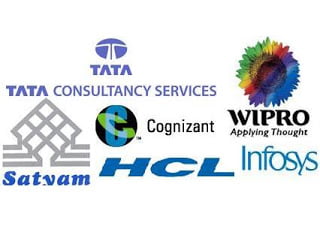The Indian software industry is the one industry that developed India’s image as a land of talented engineers. Let’s see how? It all started back in the 1990’s. At that time India had just started liberalizing its economy to cope with the stunted growth and financial mismanagement. The liberalization of the economy opened up a huge opportunity for growth in the 1990’s because of the “IT boom”. Indian entrepreneurs capitalized on this opportunity and soon India became the hub of IT outsourcing because of cheap well-educated engineers and English being a common language of communication. This industry catalyzed India’s growth to one of the fastest developing countries in the world. This golden run of the industry continued for more than a decade. But the industry was badly hit in the recession of 2008 and since then it never really recovered. The miserable condition of the world economy badly hit this industry since its success relied on giving services to businesses in western countries. With the developed countries in an economic mess, more and more companies in the west started cutting costs and since the objective was to keep the companies afloat rather than grow, the companies regulated their use of these services. This led to a slump in the growth of the industry. In 2011-12 the growth rate was a measly 5.5% in comparison to a robust 28% in ’07-’08. For the current fiscal year of 2012-13, the growth rate is estimated to be 11-14%, which some experts say is too optimistic. The drop in growth rate was not just because of the recession but also because of increasing competition in the form of cloud computing.
Cloud computing with advantages like readily expandable user-base, almost no maintenance costs and a lead-up time period of just a few days seemed to be a better option compared to outsourcing to India. With a high growth rate cloud computing is eating into the market space that Indian companies once very handsomely occupied. But increasing competition is not the only reason. The industry’s own lack of innovation has proved to be expensive. These companies had relied heavily on their cost advantage over other options. But with competitors providing more services and flexibility at a competent price, the outsourcing option just doesn’t seem lucrative enough. The recession, increasing competition and lack of innovation have together led to a considerable drop in the stock prices of leading IT companies and large-scale lay-offs. The companies have been forced to lay-off their employees and freeze the salaries of existing employees. Even the top management has not been spared with the CEO’s taking huge pay-cuts, some up to 50% of their salary. These are all indications that all is not well in the industry and that a major turnaround is needed to get the industry at the level it was. If the problems are not dealt with the right approach, it could well be the end of the road for the once successful Indian software industry. But with industry stalwarts like Narayan Murthy playing a very passive role in the functioning of the industry, the industry needs the right people to steer it through these hard times!



































